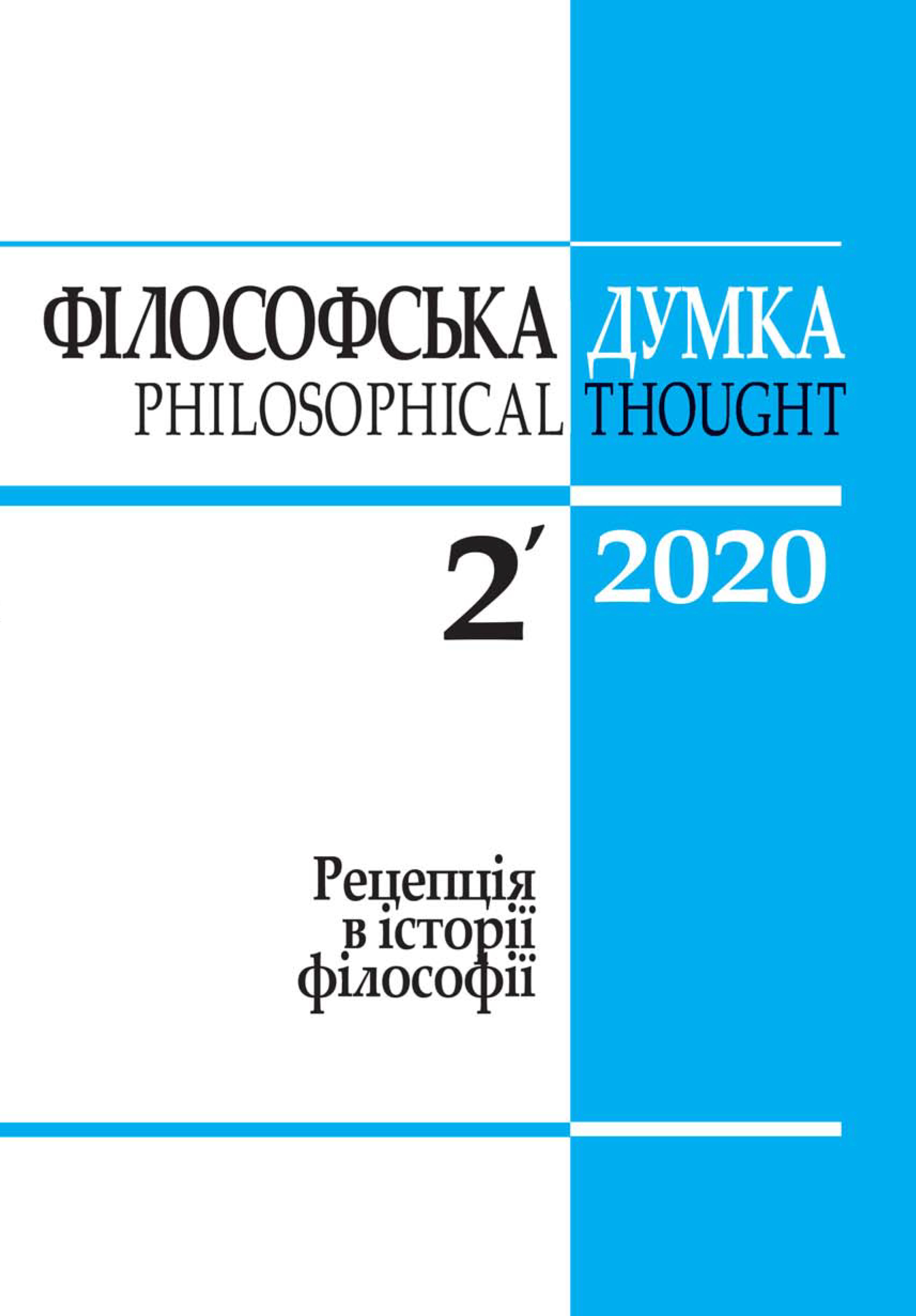Василь Пріц, Володимир Кузнєцов. Головні риси космологічної картини світу
ФІЛОСОФІЯ НАУКИ
DOI:
https://doi.org/10.15407/fd2020.02.086Ключові слова:
Всесвіт, космологія, філософія космологіїАнотація
Фізична космологія – одна з дисциплін, що перебувають на вістрі сучасної науки. Використовуючи наявні фізичні теорії та створюючи власні, вона описує динаміку та еволюцію Всесвіту, трансформує та модернізує сучасну наукову картину світу в його найбільшому з можливих масштабів. У статті аналізовано головні припущення та результати сучасної космології, які спираються на фундаментальні фізичні принципи (теорії) та астрономічні спостереження. Виявлено, що космологія впродовж свого існування як науки (близько 100 років) сприяла виникненню низки світоглядно-філософських проблем. Тому, потрібна всебічна актуалізація філософії космології, яка може допомогти усвідомити такі проблеми. З огляду на необхідність співпраці космології та філософії науки запропоновано використовувати різні методологічні, онтологічні, епістемологічні та інші філософські прийоми для розв’язання світоглядних проблем, що постають у космологічних дослідженнях, а також для узагальнення наявних знань про Всесвіт.
Посилання
Vvedenskyi, A. (1897). On Atheism in Spinoza's Philosophy. [In Russian]. Voprosy filosofii i psikhologii, 37 (2), 157-184.
Zasov, A., Postnov, K. (2011). General Astrophysics. [In Russian]. Friazino: Vek 2.
Kuznetsov, V. (1977). Philosophical Analysis of the Foundations of Particle Physics. [In Russian]. Kyiv: Naukova Dumka.
Kuznetsov, V., Burgin, M. (1992). The World of Theories and Power of Mind. [In Russian]. Kyiv: Ukraina.
Popov, S. (2000). Large-scale structure of the universe. [In Russian]. Retrieved from: http://www.astronet.ru/db/msg/1171366
Russel, B. (2017). The art of rational conjecture. [In Ukrainian]. In: Ja.V. Shramko (Ed.), Actual problems of spirituality (vol. 18, pp. 81-97). Kryvyi Rih.
Burgin, M.S., Kuznetsov, V.I. (1993) Properties in science and their modelling. Quality and Quantity, 27, 371-382.
https://doi.org/10.1007/BF01102499
Carroll, S. (2019). Something Deeply Hidden. Quantum Worlds and the Emergence of Spacetime. S.l.: Penguin Group (USA) LLC - Dutton.
Chaboyer, B., Krauss, L.M. (2002). Dark energy and the Hubble age. Retrieved from: https://arxiv.org/abs/astro-ph/0212369. DOI: 10.1086/382121.
https://doi.org/10.1086/382121
D'Agostini, G., Petit, J.P. (2018). Constraints on Janus cosmological model from recent observations of supernovae type Ia. Astrophysics and Space Science, 363 (7), 139. DOI: 10.1007/s10509-018-3365-3.
https://doi.org/10.1007/s10509-018-3365-3
Dienes, K.R. (1997). String Theory and the Path to Unification: A Review of Recent Developments. Retrieved from: arXiv:hep-th/9602045. DOI: 10.1016/S0370-1573(97)00009-4.
https://doi.org/10.1016/S0370-1573(97)00009-4
Dyson, L., Kleban, M., Susskind, L. (2002). Disturbing Implications of a Cosmological Constant. Retrieved from: https://arxiv.org/abs/hep-th/0208013. DOI: 10.1088/1126-6708/2002/10/011.
https://doi.org/10.1088/1126-6708/2002/10/011
Einstein, A. (1917). Kosmologische Betrachtungen zur allgemeinen Relativitätstheorie. Sitzungsberichte der Königlich Preußischen Akademie der Wissenschaften, 1, 142-152. DOI: 10.1007/978-3-663-19510-8_9.
https://doi.org/10.1007/978-3-663-19510-8_9
Ellis, G. (2014). Why does cosmology need philosophy? Retrieved from: https://plus.maths.org/content/phil-cos.
Falck, B. (2018). Why cosmology without philosophy is like a ship without a hull. Retrieved from: https://aeon.co/ideas/why-cosmology-without-philosophy-is-like-a-ship-without-a-hull.
Frieman, J., Turner, M., Huterer, D. (2008). Dark energy and the accelerating Universe. Annual Review of Astronomy and Astrophysics, 46 (1), 385-432. DOI: 10.1146/annurev.astro.46.060407.145243.
https://doi.org/10.1146/annurev.astro.46.060407.145243
Hawking, S. (2011). Why are we here? In: Google's Zeitgeist Conference. Retrieved from: https://www.youtube.com/watch?time_continue=25&v=r4TO1iLZmcw&feature=emb_title.
Hubble, E. (1929). A relation between distance and radial velocity among extra-galactic nebulae. Proceedings of the National Academy of Sciences, 15, 168-173. DOI: 10.1073/pnas.15.3.168.
https://doi.org/10.1073/pnas.15.3.168
Kirshner, R.P. (2003). Hubble's diagram and cosmic expansion. Retrieved from: https://pdfs.semanticscholar.org/c0ce/fe53e0d859d926f98651fa267f31ca7b97a7.pdf. DOI: 10.1073/pnas.2536799100.
https://doi.org/10.1073/pnas.2536799100
Krauss, L. (2012). A Universe from Nothing: Why There Is Something Rather than Nothing. New York: Free Press.
Krauss, L., White, M. (1992). Gravitational lensing and the variability of G. Astrophysical Journal, 397, 357-361. DOI: 10.1086/171792.
https://doi.org/10.1086/171792
Narlikar, J.V. (2010). Fred Hoyle's Universe. Retrieved from: https://www.ias.ac.in/article/fulltext/reso/015/10/0875-0904. DOI: 10.1007/s12045-010-0100-y.
https://doi.org/10.1007/s12045-010-0100-y
Novosyadlyj, B., Tsizh, M. (2017). Voids in the Cosmic Web as a probe of dark energy. Retrieved from: http://www.icmp.lviv.ua/journal/zbirnyk.89/13901/art13901.pdf. DOI:10.5488/CMP.20.13901.
https://doi.org/10.5488/CMP.20.13901
Oerter, R. (2006). The Theory of Almost Everything: The Standard Model, the Unsung Triumph of Modern Physics (Kindle ed.). New York: Penguin Group. DOI: 10.1063/1.2337829.
https://doi.org/10.1063/1.2337829
Riess, A., Filippenko, A., Challis, A. et al. (1998). Observational evidence from Supernovae for an accelerating Universe and a cosmological constant. The Astronomical Journal, 3, 1009-1038. DOI: 10.1086/300499.
https://doi.org/10.1086/300499
Schlipp, P. (1949). Albert Einstein, Philosopher-Scientist. New York: Tudor Publishers.
Spergel, D.N. et al. (2003). First-year Wilkinson Microwave Anisotropy Probe (WMAP) Observations: determination of cosmological parameters. Astrophysical Journal Supplement Series, 148, 175-194. DOI: 10.1086/377226.
https://doi.org/10.1086/377226
Visser, M. (1993). Hawking radiation: a particle physics perspective. Retrieved from: arXiv:hep-th/9204062. DOI: 10.1142/S0217732393001409.
https://doi.org/10.1142/S0217732393001409
Wood-Vasey, W.M. et al. (2007). Supernovae are good standard candles in the near infrared: Evidence from PAIRITEL. Retrieved from: https://arxiv.org/abs/0711.2068. DOI: 10.1086/592374.
https://doi.org/10.1086/592374
Zinkernagel, H. (2014). Philosophical aspects of modern cosmology. Studies in History and Philosophy of Modern Physics, 46, 1-4. DOI: 10.1016/j.shpsb.2013.12.001.
##submission.downloads##
-
PDF
Завантажень: 531
Опубліковано
Як цитувати
Номер
Розділ
Ліцензія
Автори, які публікуються у цьому журналі, згодні з наступними умовами:
- Автори зберігають авторське право і надають журналу право першої публікації.
- Автори можуть укладати окремі, додаткові договірні угоди з неексклюзивного поширення опублікованої журналом версії статті (наприклад, розмістити її в інститутському репозиторії або опублікувати її в книзі), з визнанням її первісної публікації в цьому журналі.
- Авторам дозволяється і рекомендується розміщувати їхню роботу в Інтернеті (наприклад, в інституційних сховищах або на їхньому сайті) до і під час процесу подачі, так як це може привести до продуктивних обмінів, а також скорішого і ширшого цитування опублікованих робіт (див. вплив відкритого доступу).


